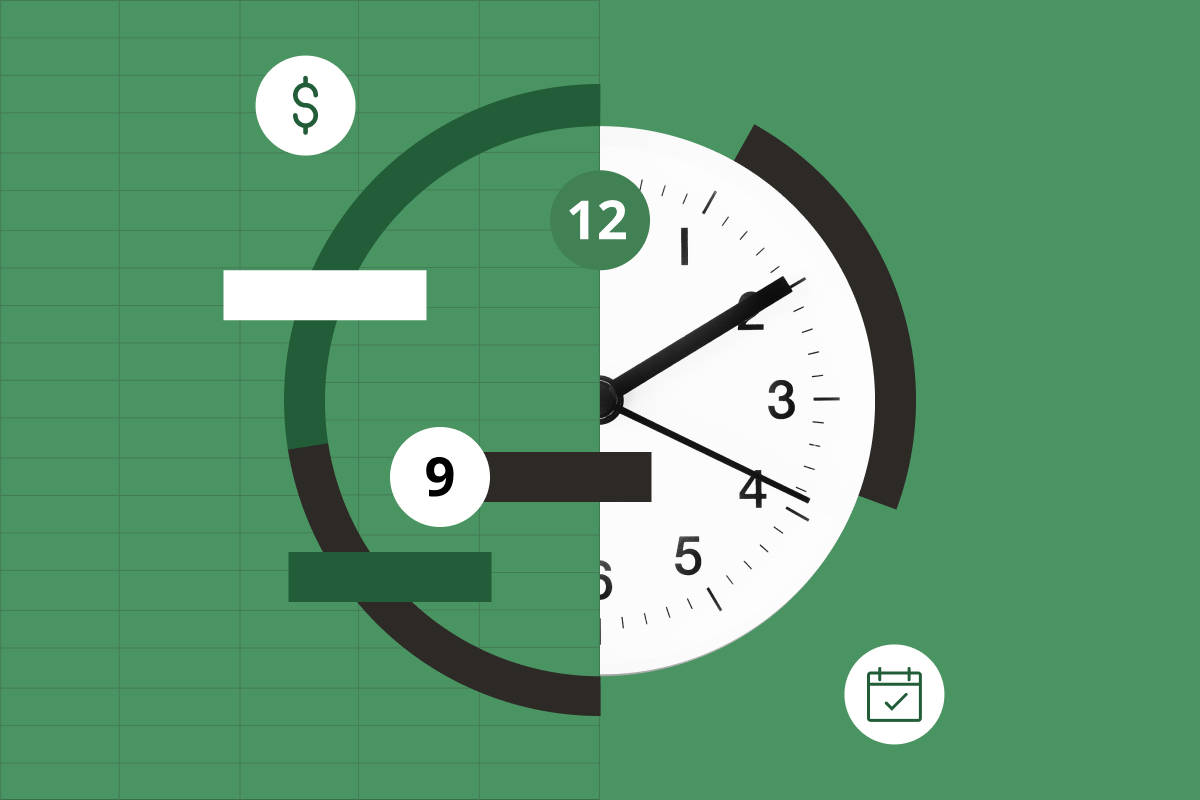When you’re the one in charge of your business’s budget, you’re used to getting a certain type of reaction when budgeting season comes around.
A grimace, maybe. A frown, for sure. Maybe even a choice word I can’t repeat here.
As part of the finance team, just the thought of those negative reactions can induce feelings of dread. After all, who gets excited over the thought of wrangling unhappy budget holders from across the business? But you need their inputs, so you have no choice but to play the role of budget bad guy.
Rather than going through the motions to get things over with quickly, however, spending the time necessary to move away from your spreadsheet-based budgeting approach is what will drive meaningful progress, impacting not just your finance department but the entire organization.
So maybe it’s time to push through the dread and get ambitious—to reshape your processes, change opinions around the entire budgeting cycle and put your finance team more firmly in the driver’s seat of your annual budget.
As someone who’s spent most of my career helping businesses with their budgeting, forecasting and reporting processes, I’ve learned a few things over the years on how to make your budgeting cycle better. I’ve distilled my top advice in this blog.
How To Improve Your Budgeting Process: 6 Tips
How do you improve your budgeting process for everyone—from your finance team to your organization-wide budget holders?
Here are six budgeting best practices I’ve picked up from working with finance teams across various industries, which can help you present your budget more effectively while also evolving it to meet your organization’s current needs.
Tip 1: Embrace Your Budgeting Process, But Don’t Accept the Status Quo
Keep your chin up. Turn your frown upside down. However you want to say it, my first tip is to relax and not be afraid of adverse reactions. Push away that feeling of dread.
Not only because your budget holders can smell your fear and misery, but because if you treat budgeting like something awful, it’s going to be something awful. And when that’s the case, it’s hard to make positive changes, or get anyone on board.
So instead, be the champion your budgeting process needs. But, that doesn’t mean you should stop looking for ways to make it better. In other words, own your budgeting processes, but continue to improve on them.
And while improving your budget may be hard work, it’s also an opportunity to make your mark on the business. In fact, it’s probably one of the best ways you can increase your profile organization-wide.
So don’t wait to get started. Begin your path to change now.
Tip 2: Don’t Just Do What You Did Last Time, But Don’t Change Everything All at Once Either
When it comes to creating a new budget, different finance teams have different approaches. Some simply roll over last year’s budget and increase it incrementally. Others take a zero-based budgeting approach, starting each budget from scratch.
Regardless of the approach you take, you can still examine your budgeting process from a zero-based perspective. That is, don’t do what you did last time just because that’s the norm. Not when some aspects of your process are probably only there because of initiatives long abandoned.
That’s a waste of time—for both you and your budget owners.
Instead, take an honest look at everything you’re doing—your templates, processes and more—and assess each one. Do a cost-benefit review, asking whether an action's value to the planning process is worth the time the budget holder takes to do it.
In fact, you should get into the habit of reassessing your processes every year, making changes incrementally as you do. As long as it makes budgeting season easier for department heads, they will thank you for those changes (or at least frown a little less).
But notice how I said changes should be “incremental?” That’s because you can start to lose the interest of budget holders if you try to do everything at once. When you push changes across the business all at once, those changes can become overwhelming, and nothing gets done.
Instead, prioritize your changes by talking to leadership and choosing one or two goals to focus on your current cycle. For example, that goal could be a specific increase in gross margin percentage, an increase in revenue share from new products, or a reduction in non-personnel operating expenses.
This will make it easier to convey a theme to your budget holders and for them to recognize that theme, focus on it and hopefully even get excited about the shift.
Tip 3: Support Budget Holders With Analysis, But Understand You Can’t Give Them Everything They Want
Open dialogue is critical to the budgeting process—at least if you want your budget holders to get on board with any changes you make. That means you must clearly define your expectations and needs for the budget process from the outset.
And even as your own view of the business changes in the course of revenue planning, those expectations shouldn’t.
For every template you hand out, determine an expected or acceptable total—then put it in bold at the top. If you’re concerned that a number may shift, make it lower than you actually expect. Budget holders that need more can put forward their case, justifying their new needs.
But when your budget holders ask if you can model certain aspects of the business or dive into more detail in certain areas, consider the question before you say yes. Because more detail comes with a time cost—and you need to understand whether that cost is acceptable to you and your team.
Sometimes that cost is worth it. In people planning, for example, it helps to have every employee’s salary inputted so that you can accurately determine the amount you’re paying in salaries per month.
But sometimes that extra time spent on analysis isn’t worth it. When it comes to marketing, for instance, tracking the cost of each campaign can not only be time-consuming but also make it harder to be accurate, as you may not know which campaigns your marketing team will run at planning time.
So, talk to your budget owners and look for areas that add value, but don’t say yes to requests just to keep people happy. If you’re unsure whether an activity or level of detail is needed, leave it out.
Do less now, because you can always add more later.
Tip 4: Embrace Driver-Based Planning and Rolling Forecasts
The right processes can create a smoother budgeting cycle that everyone is able to get behind. And that’s where driver-based planning and rolling forecasts come in.
Driver-based planning focuses your department budgets on whatever drives their slice of the business, letting them plan around their specific needs.
While different departments have different drivers—something that adds complexity to your budgeting—driver-based planning lets you budget better for your business as a whole. It also ensures that your budget owners have the resources they need to meet their specific requirements.
Rolling forecasts are another useful process that can help strengthen your budgeting cycle. But only if you do them right.
That is, when you actualize the period in question, then extend your budget out by a period or quarter so that you’re always looking a year (or whatever predetermined period you choose) ahead.
This can be complicated to achieve, as you need budget holders to engage every month or quarter, rather than just once a year. And it’s not feasible if you opt for a classic annual budgeting process every period. You need driver-based planning to make it work.
But, once you get both going, and have regular conversations with budget holders, rolling forecasts can make budgeting a regular yet manageable task, rather than a hardship that everybody dreads once a year.
Tip 5: Sell the Benefits of Your Budget, But Continue To Ask What Can Be Improved
When you’re talking to the rest of your organization, you should be constantly selling the benefits of your budget. At the same time, however, you should listen to your budget holders’ pain points and collaborate with them to find the best solutions for all.
So don’t just be a cheerleader—be a leader. Explain why you’re doing what you're doing and try to make the rest of your organization understand the reasons for any changes you’re making. Demonstrate empathy towards their point of view by asking them how you can make the budgeting process easier for them.
This may seem obvious, but it’s something that many finance teams overlook or forget because they feel it’s easier to handle things themselves. But going at it alone can often mean things get missed, and it does nothing to build your relationship with the rest of the business.
So, ask other teams open-ended questions about how their department operates, to find out what’s challenging for them to plan. The first answer they give is probably what’s top of mind for them.
If you can find one small change to help each area of the business—it doesn’t even have to be budget related—you begin to turn your budget holders into allies.
Communicating with the rest of the business in this way also has the side effect of helping you improve your understanding of the organization as a whole.
Tip 6: Don’t Stop Making Improvements Once Your Budget Is Finished
Once your actuals are in place and your budget is complete, you may be tempted to call it a day—quickly moving on to the next thing and putting your budget behind you. But there are improvements you could still be making.
The most obvious one, of course, is ensuring all of your data is correct. If someone disputes a number, forget everything else and fix it first. For others to trust your budget, the data must be solid.
But your reporting, too, may need improvements to make it accessible to everyone. After all, people can only focus on so much information at a time—and it’s probably less than you might think.
With that in mind here are a few things you can do to make variance reports easier for stakeholders to understand:
This will make reporting easier for everyone to digest—so that the entire organization fully understands and benefits from the budget.
How Vena Can Help
A good way to start redesigning your budgeting process and get your organization on board is to implement the right technology. Look for a platform that can help make budgeting easier and more accessible for all.
Whether you take a top-down or bottom-up budgeting approach, Vena can help you streamline your budget with workflows for automating manual tasks, rolling forecasts for a continuous forward view, and dashboards that help the entire business better visualize your results.
Take Schuh, for instance. The shoe retailer—which has over 120 shops across the UK and Ireland, as well as an online e-commerce presence—cut their budgeting cycle time in half with the help of Vena.
Thanks to Vena's data consolidation, automatic updating of actuals and collaboration features, Schuh’s finance team no longer has to start every budgeting cycle from scratch. They’ve also been able to get the whole business more involved in the process.
And with a scalable, Excel-native interface, Vena is easy for both finance and non-finance team members to use, and flexible to your business needs. Meaning you can continuously improve your budget to keep up as your business evolves.







